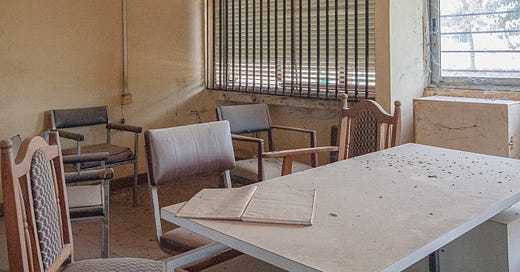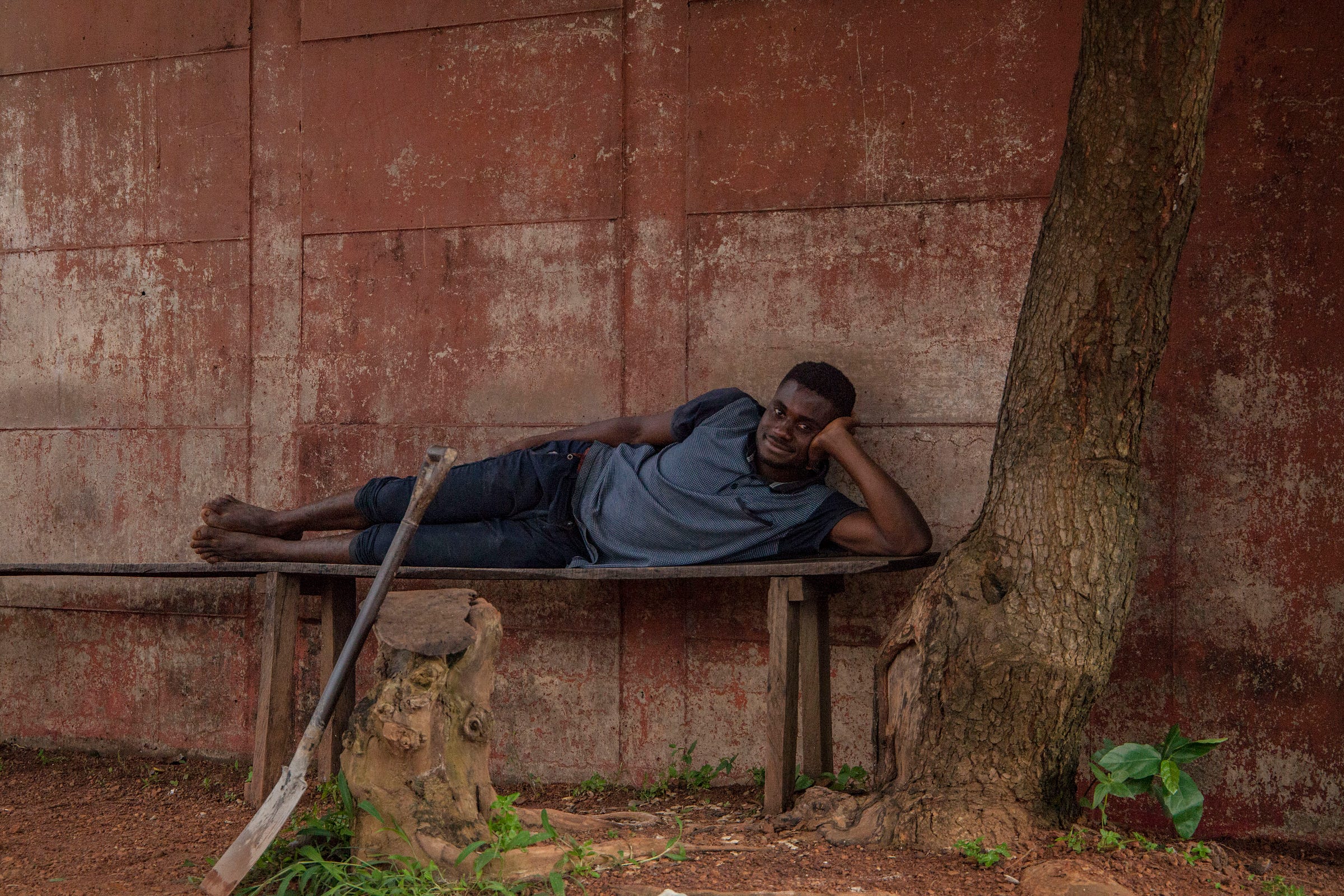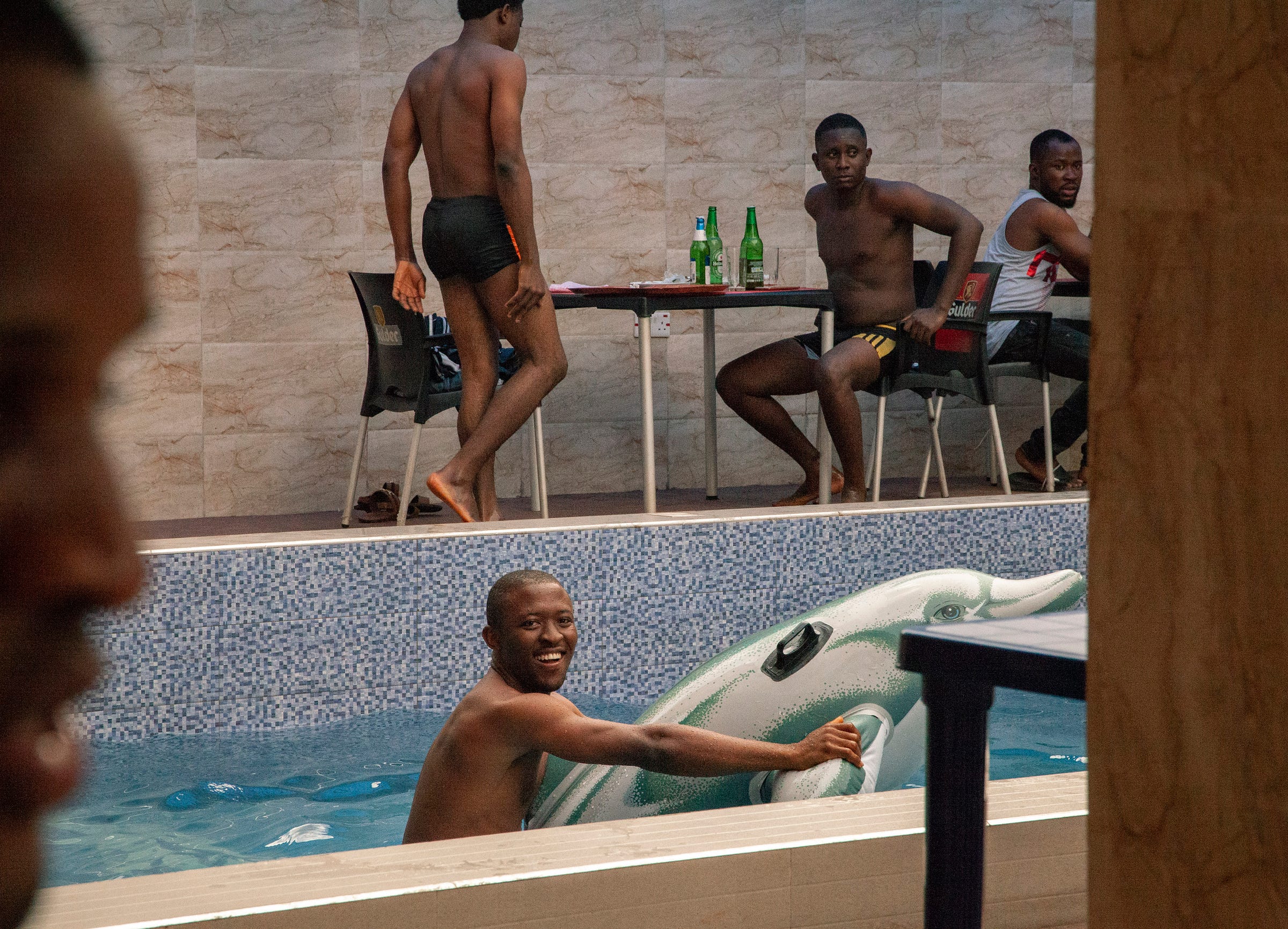Six chairs, if you were to count: six chairs and a table. In a room bereft of attention. In a room whose cobwebbed window overlooks lines of leaves, and tells of an outside equally flourishing with neglect, left to return to a former state. Only it is a former state upended by the state of the building the room is part of. And the abandonment is consequential; it is a room full of ghosts. The chairs, then, counting the book on the table, register a meaning other than absence; the furthest degree of presence, a deposit of leftover traces. Just as anyone bereaved knows how the memory of a dearly departed is as definite a presence as a room once inhabited.
Immaculata Abba: “Beauty, which photography propagates, convinces so many of us to try again.”
The photograph was taken in the lab room in the administrative block, Sunrise Flour Mill Estate in Emene, Enugu, Nigeria.
Someone I knew was going there and needed photos, in case of incasity. I tagged along.
What makes this photograph special for me is the open book on the table. One day, somebody bought that book. The same person, or another, brought it to that room to record experiments or minutes. Around that same time, someone put those chairs around that table, for a purpose relating to that book. Walking through this room, as through all the other rooms in that admin block, I felt the presence of the people who had used it just before the silence took over. A lot was still in motion: test tubes and beakers in the sink, plugs just removed from their sockets, equipment on the table positioned at angles as though they were facing someone. I remember entering the room and thinking, in FK's voice from the I Said What I Said podcast, “Who was prepared for this?”
Life is still in that room, as in the rest of the building, even though it looks like desolation. In a lot of my work, I keep going back to the loss that Nigeria (who or whatever Nigeria actually is) makes out of lives. You know, you build a flour mill and it goes out of production only after two years. Forty years later, some photographer is still writing about the afterlife of that 2-year existence because we still need that mill and its ghost will have to suffice in the meantime. Just like, you know, my parents gave birth to their first son and only after eleven years, he died in an avoidable plane crash (no water at the airport, etc.). Twenty years later, the same photographer is still writing about the afterlife of that boy because we still need him and so his ghost...
Every Nigerian has many versions of this story threading through their lives. The photo, just like the entire collection it's from, is currently my primary metaphor for what living is like under Nigeria: so much else could be happening, and we are constantly mocked by it.
My approach to photography is to pay attention to the dignity, complexity and history that enable us to imagine more beauty, care and capacity in our lives.
Among many ways photography is impactful, here's one: beauty, which photography propagates, convinces so many of us, severally, to try again.
Two more photographs by Immaculata Abba
For each week’s feature, I send 3 photographs to the photographer, and ask them to respond to one. Here are the 2 other photographs I selected from Immaculata’s portfolio. What do you think about any of them? You can respond as a comment below.
Last Week — Kwena Chokoe
“I love to take photos that feature a human presence, without the human body itself. In this case, a limb animated the scene; to whom it belongs matters little. I love the composition and the content of the photograph. I was visiting my now-101 year old grandfather, which I only get to do once a year when I come home, and I love how consistent and predictable and familiar his home is. And yet I always find something beautiful and new that captures my attention. Our homes don't look like the way his does anymore. We are urbanised, evermore westernised, and globalised too. Our homes look like those of Americans in taste.”
Read “Private Black Lives.”
Thank you for reading and sharing this feature on Immaculata Abba. You can see more of her work on her website, Instagram, and Twitter. See also her Q&A in TheBlkGaze.
Every week I feature one photograph and the photographer who took it. You’ll read a short caption from me, and a statement from the photographer. My goal is to set up conversations with the work of early to mid-career African photographers. You can support the newsletter by asking anyone—or 10 people!—interested in the impact and meanings of photography to subscribe.







